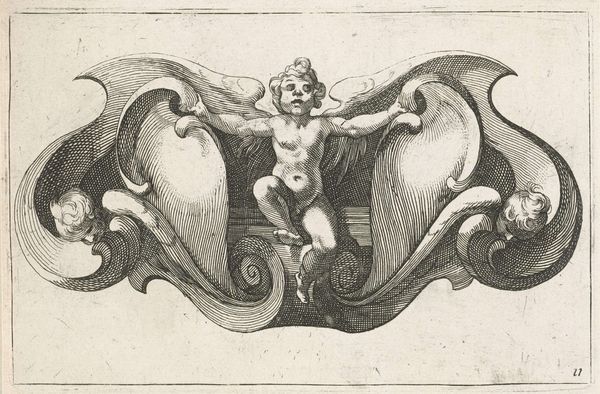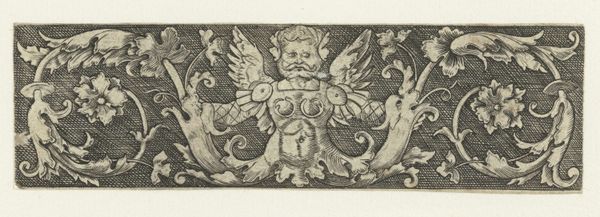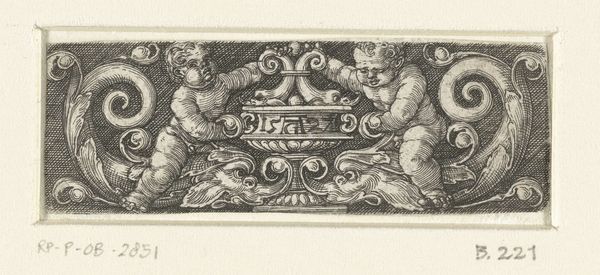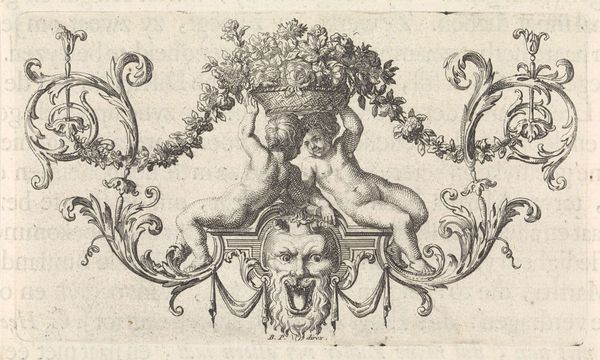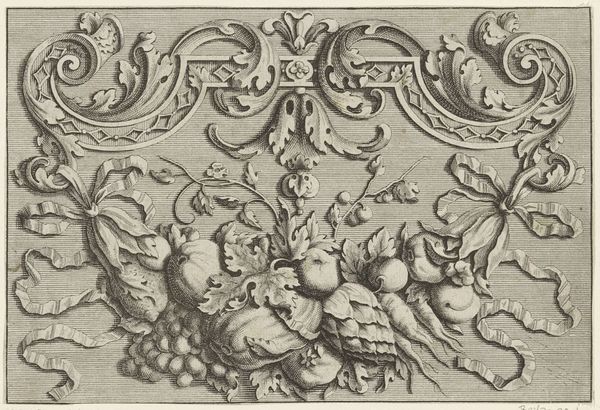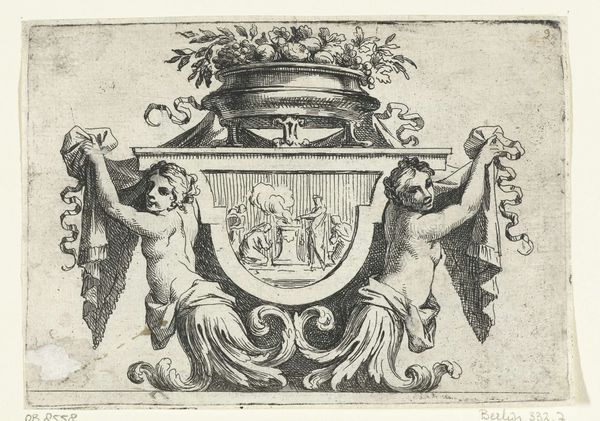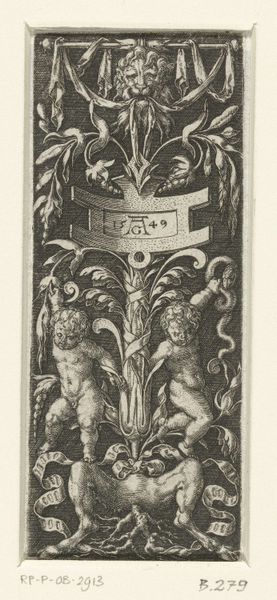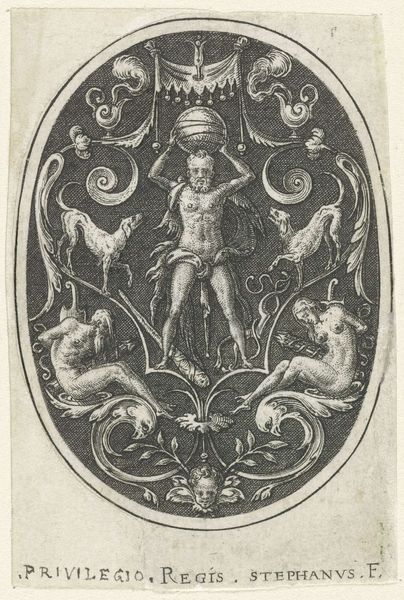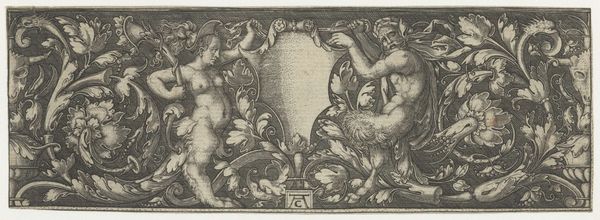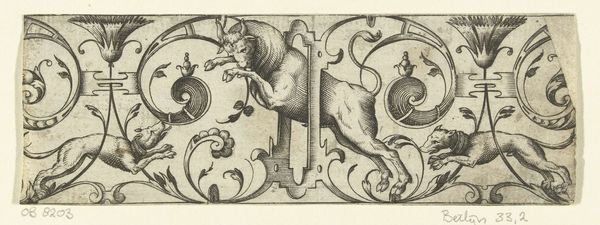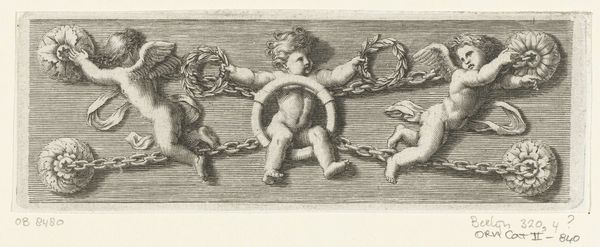
print, metal, engraving
#
pen drawing
# print
#
metal
#
figuration
#
form
#
11_renaissance
#
engraving
Dimensions: height 22 mm, width 67 mm
Copyright: Rijks Museum: Open Domain
Curator: Take a look at "Fries met een sater" (Frieze with a Satyr), a metal engraving by Heinrich Aldegrever, dating back to the period between 1512 and 1560. It's part of the Rijksmuseum collection. Editor: Immediately striking, isn’t it? There's a somewhat unsettling energy, this hybrid creature centered amidst all this elaborate ornamentation. The detail achieved with engraving is astonishing. It makes me think of the power dynamics present even in seemingly decorative art of that time. Curator: Indeed. Aldegrever, as a Renaissance artist and printmaker, operated within a complex web of societal structures. Prints like these were part of the explosion of print culture, playing a vital role in disseminating ideas, aesthetics, and also solidifying power. Ornamentation like this conveyed wealth and refinement, setting clear socio-economic boundaries. Editor: And this satyr, or rather the placement of this hybrid human-animal form. The way it's being presented, front and center with these almost assertive leaves seems deliberate. I see this form playing into contemporary conversations about societal control and perhaps even a tension between established religion and folk practices. Curator: You make an interesting point. Remember that these prints circulated in a world grappling with religious and social upheavals brought about by the Reformation. Images served as potent tools. This satyr motif likely resonated with the viewer in myriad ways – as a reference to classical antiquity but also potentially as an emblem for behaviors deemed 'other' by the dominant morality. Editor: It is impossible to look past its positionality. Encapsulated in detail and what might be considered ‘beautiful’. How might its very inclusion, crafted into this form and preserved within institutional walls speak volumes about prevailing attitudes towards the unconventional, now and then? The art is in a Museum that is supposed to give insights of historical progression. Does it actually progress social awareness and is there actually space and allowance of voices to progress societal views? Curator: That is a very powerful perspective! Aldegrever, in creating these pieces, positioned himself within the prevailing power dynamics and aesthetic standards. We get a unique snapshot of 16th century cultural landscape. Editor: Engaging with it today pushes us to investigate the assumptions embedded within that framework, and to ask important questions of cultural institutions. What does preservation mean and entail for minority opinions? How might historical perspectives re-shape what has been regarded as objective progress? I believe those questions can empower audiences!
Comments
No comments
Be the first to comment and join the conversation on the ultimate creative platform.
